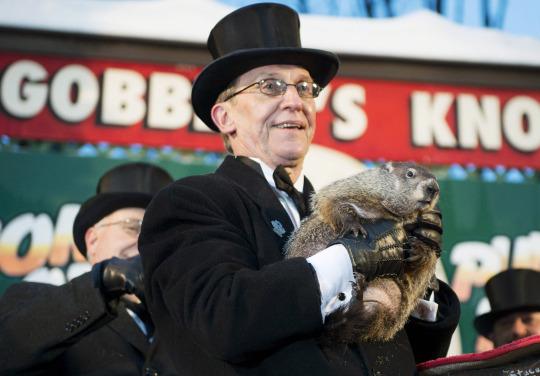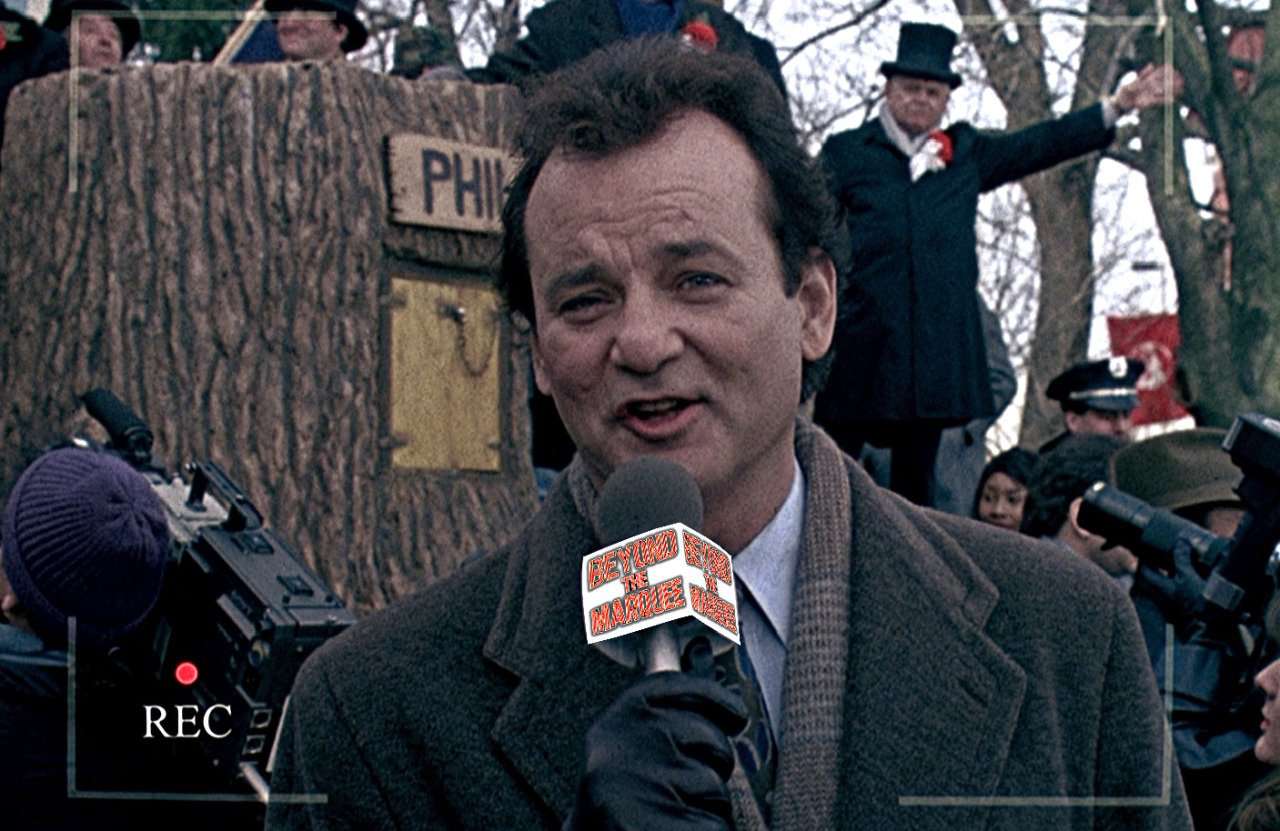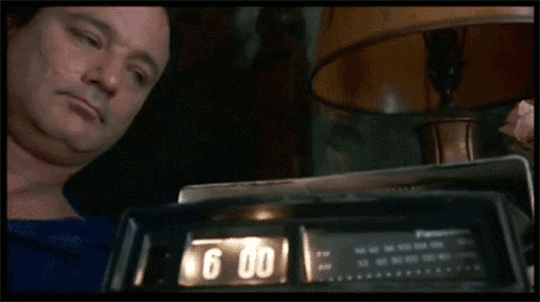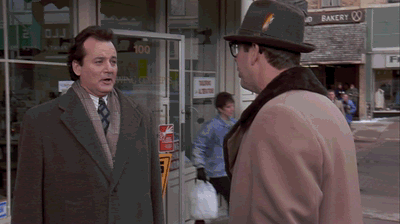- Joined
- Jan 25, 2014
- Messages
- 11,992
- Reaction score
- 1,412
- Points
- 159
How Long Was Bill Murray Stuck in Groundhog Day?
Yahoo! Entertainment News | February 1 2016 1:00 pm EST
My prognostication for tomorrow's Groundhog Day prediction is the Groundhog will NOT see his shadow and we will have an early spring )
)
Yahoo! Entertainment News | February 1 2016 1:00 pm EST


Ever wonder how long Bill Murray’s character was stuck in ‘Groundhog Day’ for? Well a film blog has worked it out for you: 33 years and 350 days.
Four days ago the town of Punxsutawney, Pennsylvania, celebrated Groundhog day – the annual celebration based around a prophetic rodent’s ability to foresee the early arrival of spring. The tradition was popularised by the 1993 film of the same name starring Bill Murray as sardonic TV weatherman Phil Connors, fated to repeat the same day in Punxsutawney over and over again.
WhatCulture dot com worked just how long Phil Connors spent limbo. Amazingly, the torturous time equates to repeating the same day 12,395 times.

Director and fellow ‘Ghostbuster’ Harold Ramis originally stated that he thought Murray’s character had been stuck in Punxsutawney for ten years, however in 2009 he admitted the estimate was far too short.
“It takes at least 10 years to get good at anything,” said Ramis, “and allotting for the down time and misguided years he spent, it had to be more like 30 or 40 years.”
The film blogger methodically reassessed ‘Groundhog Day’ looking at three stages of the film.

These included the 38 “Days shown on screen”, the 414 “Days mentioned” (including the “six months. Four to five hours a day” spent throwing playing cards into a hat), and the colossal 11,931 “Days spent learning”.
Based off the theory that it takes 10,000 hours to become an expert at anything, this third stage covered the time needed for Phil to learn French poetry, ice sculpting and the piano. All in the name of impressing his producer Rita, played by Andie MacDowell.
There’s also a final additional stage identified as the “Gesture days”, in which Murray’s character saves a falling child, performs the Heimlich Manoeuver and buys a couple of newlyweds ‘Wrestlemania’ tickets.
Dubious reasoning or perfect analysis? Let us know what you reckon…

SOURCE
Ground Hog Day
In 1723, the Delaware Indians settled Punxsutawney, Pennsylvania as a campsite halfway between the Allegheny and the Susquehanna Rivers. The town is 90 miles northeast of Pittsburgh, at the intersection of Route 36 and Route 119. The Delawares considered groundhogs honorable ancestors. According to the original creation beliefs of the Delaware Indians, their forebears began life as animals in "Mother Earth" and emerged centuries later to hunt and live as men.
The name Punxsutawney comes from the Indian name for the location
"ponksad-uteney" which means "the town of the sandflies."
The name woodchuck comes from the Indian legend of "Wojak,
the groundhog" considered by them to be their ancestral grandfather.
When German settlers arrived in the 1700s, they brought a tradition known as Candlemas Day, which has an early origin in the pagan celebration of Imbolc. It came at the mid-point between the Winter Solstice and the Spring Equinox. Superstition held that if the weather was fair, the second half of Winter would be stormy and cold. For the early Christians in Europe, it was the custom on Candlemas Day for clergy to bless candles and distribute them to the people in the dark of Winter. A lighted candle was placed in each window of the home. The day's weather continued to be important. If the sun came out February 2, halfway between Winter and Spring, it meant six more weeks of wintry weather.
The earliest American reference to Groundhog Day can be found at the Pennsylvania Dutch Folklore Center at Franklin and Marshall College:
February 4, 1841 - from Morgantown, Berks County (Pennsylvania) storekeeper James Morris' diary..."Last Tuesday, the 2nd, was Candlemas day, the day on which, according to the Germans, the Groundhog peeps out of his winter quarters and if he sees his shadow he pops back for another six weeks nap, but if the day be cloudy he remains out, as the weather is to be moderate."
According to the old English saying:
If Candlemas be fair and bright,
Winter has another flight.
If Candlemas brings clouds and rain,
Winter will not come again.
From Scotland:
If Candlemas Day is bright and clear,
There'll be two winters in the year.
From Germany:
For as the sun shines on Candlemas Day,
So far will the snow swirl until May.
For as the snow blows on Candlemas Day,
So far will the sun shine before May.
And from America:
If the sun shines on Groundhog Day;
Half the fuel and half the hay.
If the sun made an appearance on Candlemas Day, an animal would cast a shadow, thus predicting six more weeks of Winter. Germans watched a badger for the shadow. In Pennsylvania, the groundhog, upon waking from mid-Winter hibernation, was selected as the replacement.
Pennsylvania's official celebration of Groundhog Day began on February 2nd, 1886 with a proclamation in The Punxsutawney Spirit by the newspaper's editor, Clymer Freas: "Today is groundhog day and up to the time of going to press the beast has not seen its shadow." The groundhog was given the name "Punxsutawney Phil, Seer of Seers, Sage of Sages, Prognosticator of Prognosticators, and Weather Prophet Extraordinary'' and his hometown thus called the "Weather Capital of the World.'' His debut performance: no shadow - early Spring.
The legendary first trip to Gobbler's Knob was made the following year.
******** ********* ********* ********* *********
Since the 1993 release of the film Groundhog Day, starring Bill Murray as a TV weatherman (who wakes up and it's Groundhog Day over and over again!) and Andie MacDowell as his puzzled producer, attendance at the real event has expanded. In 1997, there were 35,000 visitors in Punxsutawney, five times the Jefferson County town's 6,700 population.
The Groundhog Day festivities on February 2, 1992 were joined by Bill Murray studying for his role in the movie. Then, Columbia Pictures set out to recreate the Punxsutawney Groundhog Day down to the smallest detail. There were, however, many changes made.
Columbia Pictures decided to film the movie in a location more accessible to a major metropolitan center. The highways in and around Punxsutawney were few, so Woodstock, Illinois was chosen as the site. Unfortunately, Woodstock's landscape doesn't have Pennsylvania's scenic rolling hills. Nevertheless, adjustments were made for the production. The actual Gobbler's Knob is a wooded hill with a beautiful view; the Gobbler's Knob in the movie is moved to the town square. The Punxsutawney Gobbler's Knob was recreated to scale in Woodstock's town square based on detailed notes and videos the crew made on it's visit to Punxsutawney.
The movie's script was changed to include the elaborate ceremony of the Inner Circle on Groundhog Day. The original groundhog cast for the movie was considered to be too small.
Some of the store names in Punxsutawney were used in the movie, such as The Smart Shop and Stewart's Drug Store. Punxsutawney's police cars were also recreated for the movie. The groundhog-head trash cans and Groundhog Festival flags that line the streets of Punxsutawney were displayed. Folks traveling to Punxsutawney to see the "Punxsutawney" they saw in the movie wonder why it looks "so different, yet seems so similar."
********* ********* ********* ********* *********The groundhog, also known as a woodchuck (Marmota monax), is a member of the squirrel family. Groundhogs in the wild eat succulent green plants, such as dandelion, clover, and grasses.
According to handlers John Griffiths and Ben Hughes, Phil weighs 15 pounds and thrives on dog food and ice cream in his climate-controlled home at the Punxsutawney Library.
Up on Gobbler's Knob, Phil is placed in a heated burrow underneath a simulated tree stump on stage before being pulled out at 7:25 a.m. to make his prediction.
SOURCE
My prognostication for tomorrow's Groundhog Day prediction is the Groundhog will NOT see his shadow and we will have an early spring
